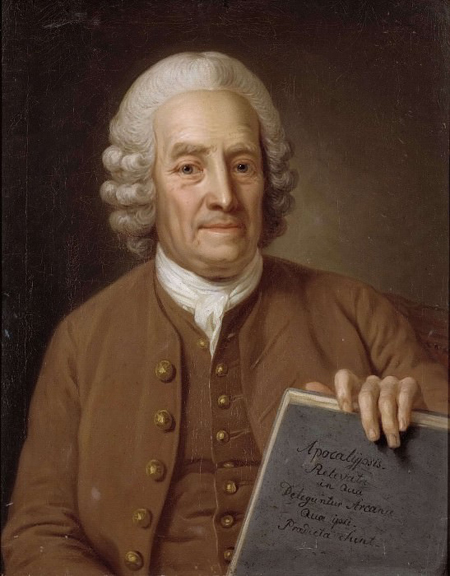Experiencing the Other World of the Devachanic Plane
Printed in the Fall 2022 issue of Quest magazine.
Citation: Scherini, Desiree Holmes, "Experiencing the Other World of the Devachanic Plane" Quest 110:4, pg 9-11
By Desiree Holmes Scherini
 When someone speaks of other worlds, images of outer space and distant planets often come to mind. We may tend to think of these worlds as far away from us, alien and unreachable. However, each of us inhabits many worlds right now, even though we aren’t commonly able to observe them.
When someone speaks of other worlds, images of outer space and distant planets often come to mind. We may tend to think of these worlds as far away from us, alien and unreachable. However, each of us inhabits many worlds right now, even though we aren’t commonly able to observe them.
Most Theosophists have a grasp of the many states of being that we inhabit. These states can be classified into three, seven, or even a myriad of stages. In the three, we acknowledge body, mind, and spirit. The basic divisions generally given in Theosophical teaching include seven subtle stages: body (rupa), vitality (prana), the astral body (linga sharira), the animal soul (kama rupa), the human soul (manas), the spiritual soul (buddhi), and the spirit (atma). Each of these states is a world of existence that our being can and does experience.
In waking life, we are most keenly aware of our physical world: our bodies, homes, furnishings, aches and pains, as well as physical pleasures. While the physical body is resting in meditation or sleep, we may become more aware of our astral being. The mind is free to roam through dreams, time, and space without the limits of the physical body. In deep states of meditation, temporary physical death, or hypnosis, our spiritual being may travel even further, to the edge of the highest level of being, while the body still remains in physical form. These experiences have been documented throughout the years, some through near-death experiences (NDEs), others through meditation or even spontaneously.
Perhaps the most difficult thing to fathom is the independent state of consciousness that is separate from the physical body. Our three-dimensional reality seldom permits us to conceive of the mind as existing beyond the brain. Luckily, in recent years, some scientists have given more serious consideration to the concept that mind, consciousness, is indeed independent of the physical body. NDEs have been instrumental in supporting this claim, as survivors have shown no brain activity yet have returned to life with extraordinary stories of their time while “dead.”
After years of careful investigation, many previously skeptical researchers have come to support the concept of consciousness existing beyond the body. Among them is Dr. Peter Fenwick, a highly regarded neuropsychiatrist who believes that “the brain does not create or produce consciousness; rather, it filters it.” Fenwick believes that “consciousness actually exists independently and outside of the brain as an inherent property of the universe itself like dark matter and dark energy or gravity.”
Similarly, Dr. Brian Weiss, a respected psychiatrist, did not believe in reincarnation until one of his patients began discussing past-life experiences under hypnosis. After confirming elements of the patient’s stories through public records, he became convinced that an element of the human personality survives after death.
Similarly, psychologist and hypnotherapist Dr. Michael Newton, who described himself as a skeptic by nature, specialized in clinically practical behavioral modifications for the treatment of psychological disorders. He resisted requests for past-life regressions until a patient found relief from chronic pain by spontaneously going back to a past-life experience of injury. This led Newton to a long career of using past-life regression to help resolve current life issues, and even more importantly, to discover that his hypnotized subjects could report back to him about their experience of the spiritual realm during the passage of the soul through what he came to term “life between lives,” passing between this life and past lives. His work led to thousands of regressions, providing case studies that reported unexpected and extraordinary correlation of the subjects’ experiences.
Therapeutically, this work also led to deep emotional healing and insights, and Newton went on to develop and teach a hypnotic therapeutic process called “Life between Lives: Spiritual Regression” with Dr. Allen Chips through the National Association of Transpersonal Hypnotherapists.
As a hypnotherapist, I have been lucky to be trained in past-life regression therapy and Newton’s and Chips’ process. Training for these processes requires that the student be the subject of the hypnotic processes as well.
Here I want to share my direct experience of the spirit world, which I will correlate to the devachanic plane of Theosophy. But first I would like to provide a previous personal experience which provided me some confirmation of the reality of this other world.
My mother passed away in the summer of 2019. I was there in the rest home to help at the time. The morning after her death, while I was in a half-awake state, she appeared to me in the form of her physical self. She had three smooth, flat stones in front of her. She was waving her hand upward into the air while raising up her torso. She said, “Build me up,” and something about her bed. Her message didn’t make sense at the time, but I made a note of it and told my sister and father.
Two days later, while visiting the cemetery, we were presented with the options for her burial, among them a new mausoleum, a tall, smooth stone structure. We then knew that she wanted to be interred in the mausoleum for her final resting place (her “bed”).
Following that communication, I had several dreams of my mother that I would share with my family. After about three months, my father said he felt sad that he never had dreams of her, although he missed her immensely.
Since she had communicated with me, I decided to ask her if she had a message for my father. As I woke one morning, I stayed in the half-awake state, with closed eyes, and asked her for a message. She did reply, with quite a detailed response for my father. It led us to a wooden chest containing a letter in which she expressed her love for him and recounted when they first fell in love. She had sent it to him several years ago, while he was traveling, but it had been returned “to sender” because he had left the hotel by the time the letter arrived. Neither my dad nor I had any knowledge of it before then, yet it held the perfect message for a grieving husband.
During that exchange with my mother, I felt that our connection was quite strong, so I asked more questions. “What is it like there?” I asked.
She answered, “It’s beautiful! Everything is beautiful! I’m beautiful!”
I asked if my godparents and my sister, who are all deceased, were there.
My mother said, “Yes” and even mentioned that Donnie, a favorite dog from before my birth, was there as well. Then she surprised me and brought me out of my state by saying, “You’re here too; you just don’t know it.” This was the first of three confirmations that I would receive that my being is not limited to the physical plane.
A month or so later, as I prepared for my certification as a spiritual regression specialist, I had several books to read, primarily those of Dr. Michael Newton, in which he documents the experiences of subjects who independently described their journey through the spiritual world. As I read the narrative of each one, along with Dr. Newton’s overview, it was made clear that the subjects routinely reported that their souls were not encapsulated in the physical body and that there was a portion of the soul that always stays in the “heaven world.” They added that while we are in our normal waking state, most of us are unaware of this, and we tend to believe that our whole being is only here, in the body.
From his subjects’ reports, Dr. Newton noted that “the average soul takes around 50 to 70 percent of their energy into a body. This can vary from life to life, depending on a soul’s body choices and state of advancement” (Newton, 135).
Then, in the late fall of 2019, a couple of months after my mother’s message about me “being there too,” I was preparing to give a presentation on devachan (best described commonly as a layer of “heaven”) to my local Theosophical lodge.
I referred to a small book by C.W. Leadbeater entitled The Devachanic Plane, or The Heaven World: Its Characteristics and Inhabitants, first published in 1896. In it he describes the spiritual realm and explains that the soul, or spirit, inhabits several different levels of being, which differ in frequency. Among those levels is the physical body and the nonphysical “bodies.”
Leadbeater states, “We have not at present in the English language any convenient and at the same time accurate words to express these conditions; perhaps to call them respectively embodied and disembodied will be, on the whole, the least misleading of the various possible phrases.” This he found more appropriate than the terms ‘living” and “dead,” inasmuch as the soul never ceases. So again I found a reference to the soul or spirit existing in that realm, both while “alive” and while “dead.”
Thus I had three diverse and separate confirmations, separated by source and time, which substantiated the reality of the particular “other world” of devachan. With further study, I came to understand that my mother’s first communication with me was from the astral plane (where the recently deceased is still connected to the physical world). Her description a few months later represented her experience of the devachanic plane, to which she must have transitioned (which is indeed heavenlike, and the being is surrounded by loved ones and beauty).
Then came my first opportunity to experience this other world through the process of hypnotic spiritual regression. Unlike the thousands of case studies in Dr. Newton’s books, I did have some prior knowledge of others’ experiences before my own session. I had read accounts of some of them and noted the similarities of the stages of passage through the spiritual realm, so I had an expectation of what I would experience.
However, I was surprised to find that my own experience did not fit my expectations completely; it seemed to have its own unique process for my visit. Even so, it was similar enough to provide me with some confidence that there was indeed something true about the experience and that I wasn’t simply making it up based on what I had read. As with other things of this nature, unless one experiences it oneself, it can seem quite questionable.
In my experience following the hypnotic induction (which was quite long), I no longer quite sensed my physical body, although I was still aware of it. At first, I was simply experiencing darkness, seemingly for quite a few minutes, until amorphous colors began to appear, moving and mixing. Blues and purples, as if lit from within. Then appeared a point of light, seemingly distant. As I told my hypnotic facilitator what I was seeing, I was directed to go toward it (yes, the “light at the end of the tunnel”). As I did I came into a cavelike space, where there were many different orblike lights in different colors. As I observed them, I began to recognize them as friends and family, even though they only appeared as colored, energetic orbs of light. Some bounced about, as if to get my attention.
I questioned why I was seeing them, as all of them were still alive. I expected to encounter those who had passed on, not the living. It was as if we all greeted each other, and although we had no physical bodies, there was still a sense of emotion. When I passed into the next “chamber,” this emotion became expansive and brought physical tears as I encountered similar energetic beings, this time those who had passed on. Again, I recognized them: my sister, a pink orb; my godmother, green; many others, in various hues; and my mother, a golden and brown glowing orb that came toward me and seemed to embrace me in loving energy.
To my right there was a large white light, which seemed to accompany me through the whole process. I didn’t want to move on from this space, but eventually passed through a tunnellike corridor, where geometric shapes began to fill my inner vision. As I progressed, they began to take forms like buildings, although they were not solid. I seemed to float through them, experiencing a sense of learning. The remainder of my journey brought insights for this lifetime, with messages received, and my facilitator eventually brought me out of the hypnosis. (This is a very brief explanation, as the complete process took about four hours.)
As a hypnotherapist practicing this process with clients, I have been fascinated to note the similarity in experiences they have had to mine and to the case studies of Dr. Newton. I give my own account to offer a personal report of experiencing this other world, which we always inhabit, yet which lies outside of our everyday physical perception of reality.
Throughout history, there are reports of the experience of these other worlds. Many of us have experienced at least a glimpse of them. As Leadbeater indicated, and as current quantum physicists report, our reality exists in different frequencies. Like a radio dial, we can adjust our antenna to receive a signal. We do indeed exist in many worlds at once. These inner worlds are available for the curious quester in each of us to explore.
Sources
Leadbeater, C.W. The Devachanic Plane. Adyar: Theosophical Publishing House, 1916.
Newton, Michael. Life between Lives: Hypnotherapy for Spiritual Regression. Woodbury, Minn.: Llewellyn, 2004.
Tucker, Jim B. “Children Who Claim to Remember Previous Lives: Past, Present, and Future Research,” Journal of Scientific Exploration 21, no. 3 (2007): 543‒52.
Desiree Holmes Scherini is a board-certified master transpersonal hypnotherapist and certified life coach. She has several other certifications as well as a BA in psychology from the University of California. She has a higher diploma in Theosophy from the Theosophical Society in England and enjoys her continued studies in Theosophy. She hosts “Intuitive Journey with Desiree” on YouTube and Podcast. She is also an artist and the author of Journey to Joy: The Written Path. She is a member of the National Capital Lodge in Washington, DC. To hear her account of her past-life regression, listen to her podcast, “Ghosts and the Spirit World: Intuitive Journey with Desiree,” on Apple Podcasts.


 It is a common assertion in alternative spirituality that mind power is the primary force in the universe and that thoughts are causative. If these statements are true, they place the practitioner in front of a daunting question: what is mind power for? Is it just a metaphysical ego trip? Or a mode of escapism?
It is a common assertion in alternative spirituality that mind power is the primary force in the universe and that thoughts are causative. If these statements are true, they place the practitioner in front of a daunting question: what is mind power for? Is it just a metaphysical ego trip? Or a mode of escapism? It’s natural to associate the idea of other worlds with life on faraway planets as well as the subtle levels of reality described by the esoteric traditions.
It’s natural to associate the idea of other worlds with life on faraway planets as well as the subtle levels of reality described by the esoteric traditions.